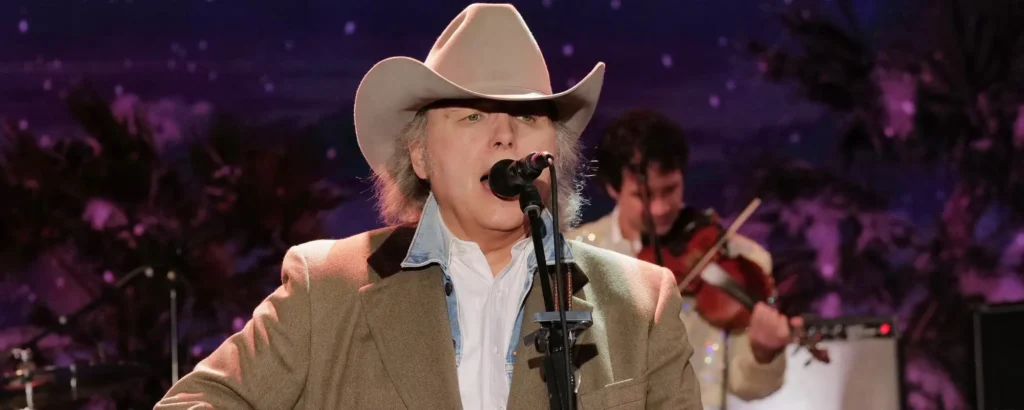
When the Season Turns Cold, and So Does the Heart
Released in 1997 as part of Dwight Yoakam’s holiday album Come On Christmas, “Santa Can’t Stay” is no ordinary seasonal tune—it’s a haunting country-rock vignette wrapped in tinsel and heartbreak. While many holiday singles are content to bask in sleigh bells and sentimentality, Yoakam’s offering charted a darker path, one that reflected his knack for storytelling steeped in human frailty. Though it never rose high on the country charts, the song became an underground favorite among those who appreciate Yoakam’s willingness to fuse Bakersfield twang with cinematic despair. It stands as one of the most striking pieces in his late-’90s catalog, an emotional detour that captures how the holidays can amplify not only joy but also loneliness and loss.
What makes “Santa Can’t Stay” remarkable is its fusion of traditional honky-tonk energy with the structure of a short tragic play. The song doesn’t merely describe a Christmas gone wrong—it stages it. In barely a few minutes, Yoakam turns what begins as a holiday tableau into a domestic meltdown, punctuated by the cold echo of reindeer bells and a narrative that burns through denial into raw truth. He plays both narrator and witness, channeling the anguish of a father barred from his own home, dressed in a Santa suit for his child’s sake. This juxtaposition—festive costume against familial collapse—exposes the emotional duality that Yoakam so often explored: love that curdles under pressure, warmth that flickers out in winter’s chill.
Musically, the track crackles with urgency. Electric guitars snarl where one might expect gentle strumming; drums drive forward with tense momentum rather than easy swing. This isn’t background music for trimming trees—it’s closer to a showdown scored in sleigh-bell time. The production bears Yoakam’s characteristic blend of rockabilly precision and country grit, yet here it’s sharpened by irony: beneath the jingle lies confrontation, beneath cheer lies grief. The rhythm feels almost breathless, mirroring the emotional disarray within the song’s narrative frame.
Lyrically and thematically, Yoakam captures something achingly real about human relationships during the holidays—the way old wounds reopen when expectations of perfection clash with lived reality. “Santa Can’t Stay” reminds us that December doesn’t always deliver reconciliation; sometimes it exposes what has long been broken. The snow outside may glisten, but inside the house there’s tension instead of tenderness. Through this inversion, Yoakam extends country music’s storytelling tradition into new emotional territory—one where Christmas lights illuminate heartbreak rather than hide it.
More than two decades later, “Santa Can’t Stay” endures as an audacious contribution to both Yoakam’s body of work and to American holiday music at large. It refuses sentimentality in favor of truth—a truth that even in moments meant for celebration, human hearts can falter. In that sense, Dwight Yoakam gave us not just a Christmas song, but a wintry morality play: brief, blistering, and unforgettable.